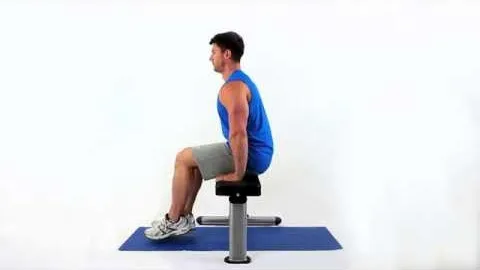
Seated Push Up Exercise: A Complete Guide for Building Upper Body Strength
If you're looking to build upper body strength without having to perform traditional push ups on the ground, the seated push up exercise is an excellent alternative. This exercise is particularly useful for individuals who may have difficulty performing traditional push ups due to physical limitations or joint issues. In this comprehensive guide, we will delve into the benefits of seated push ups, proper form and technique, variations to challenge yourself, and tips for maximizing your results.
Seated push ups are not only effective for building strength, but they also offer a range of benefits that go beyond just muscle development. Some key benefits include:
To maximize the effectiveness of seated push ups and minimize the risk of injury, it's crucial to maintain proper form and technique. Follow these steps to perform the exercise correctly:
Remember to breathe evenly throughout the exercise, inhaling as you lower your body and exhaling as you push back up.
Once you've mastered the seated push up exercise using proper form, you can introduce variations to increase the challenge and enhance your progress. Here are a few variations that you can try:
To get the most out of your seated push up exercise, keep the following tips in mind:
In conclusion, seated push ups are an excellent alternative to traditional push ups for building upper body strength. By following proper form and technique, incorporating variations, and consistently challenging yourself, you can achieve remarkable results. Remember to prioritize your safety and listen to your body's cues throughout your fitness journey. So, get ready to elevate your upper body strength by adding seated push ups to your workout routine today!
If you're looking for a gym, fitness club or yoga studio, you've come to the right place.
You can find information about gyms in your area. Browse catalog of gyms and find gyms with classes which are you looking for.
On gym page you can find simple information like address, phone or website. You can find list of available classes. You can check availability of personal training or small group classes. On place page you can also see information about open hours.
You can find gyms near you with amenities, courts, studios and equipments.
Use our map to find gym at your city or district.
In Gym Navigator you can find list of exercises with movies for many body parts.
You can browse exercises catalog and find exercises the best of you.
You can also find exercises grouped into workout plans, which you can use to improve you body. Each routine show you exercises one by one and give you possibility to count you progress and count down rest time.